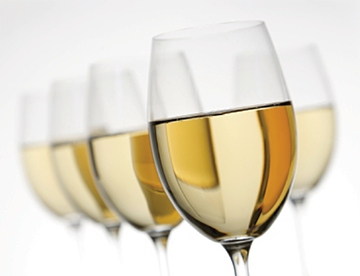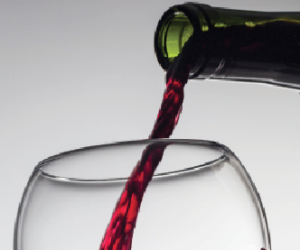 A common perception about wine is that red wines should always be aged and white wines are intended to be consumed young. I won’t call this a total misconception — it is often true — but there are exceptions to both of these notions about red and white wines. For this column, I’m going to focus on creating white wines that are worth the wait when they are allowed time to evolve into a more complex wine.
A common perception about wine is that red wines should always be aged and white wines are intended to be consumed young. I won’t call this a total misconception — it is often true — but there are exceptions to both of these notions about red and white wines. For this column, I’m going to focus on creating white wines that are worth the wait when they are allowed time to evolve into a more complex wine.
When talking about aging white table wines (even though there are commercial exceptions that may be aged 20+ years) we’re generally speaking of aging them 4–8 years on a home winemaking scale. As time passes a crisp, fruity young Riesling can develop new tropical fruit aromas and mineral complexities, however it is very difficult, especially on a home winemaking scale, to age a white wine more than 4–8 years without introducing off flavors and aromas.
The two most important things to know from the start are that some white varieties will never age well, and only the best fruit should be used to age. Compromised fruit that will make below average wine when fresh will deteriorate even more as it’s laid down. This means avoiding fruit that is under or overripe, that which is damaged by bugs, or which has been compromised by mold or severe climatic events (e.g. hail, excessive rain).
Choosing which pristine white grapes to try making ageworthy wine with is just as important. Winemakers argue about, and continue to search for, exactly what makes some varieties age more gracefully than others, but there are certain characteristics that everyone agrees help, which I’ll get into later. For beginning winemakers, it’s likely best to stick to the varieties that are known for their aging qualities. Some of these include white grapes that are often barrel aged like Chardonnays from Burgundy, as well as other varieties such as Riesling, Gewürztraminer, Muscat, and Sémillon. Allowing any of these wines to age can add nuances and complexities over the years.
A few of a grape’s natural properties that make some more ageworthy than others are high acidity (and a correspondingly low pH), alcohol, and polyphenols including tannins. Since white wines are not fermented on the grape skins the way red wines are, they cannot rely on the high tannins that come from the skins and therefore the acidity and pH become much more important. Acids act as a preservative in wine and a low pH makes it difficult for spoilage microorganisms to survive — which becomes more important the longer a wine is aged. Another factor that helps a wine age well is high residual sugar (so ice wines, Sauternes, and other sweet-wine styles will often age beautifully for decades, however we’re focusing on white table wines here.)
For styles where appropriate — such as Chardonnay — aging in barrels helps a wine’s aging potential due to the micro-oxygenation effect in barrels and added tannins from the oak. Other techniques that can add stability to more neutral white wines is aging sur lie (on the lees) and bâttonage (stirring the lees). Aging on the dead yeast cells imparts more body to the wine, as well as a slightly yeasty or nutty character.
Many of the winemaking techniques and practices in a white wine meant to age are the same as if the wine were meant to be drank fresh — however they are even more important as small flaws will become dramatic problems the longer they are allowed to evolve. Things like oxygen contact must be monitored and kept to a minimum, because you do not want to wait five years to find out you have a storage of brown vinegar due to oxygenation. The timing and levels of sulfur dioxide additions must be monitored and maintained precisely (our SO2 calculator at winemakermag.com/sulfitecalculator will help you calculate these based on volume and pH). Sulfite should be added as soon as fermentation is complete to keep oxidative enzymes in check. These enzymes are responsible for the browning effect. Also, ensuring complete dryness and completion of malolactic fermentation (if MLF was done in a Chardonnay, for example) is critical. If bottling is done too early, you’ll be popping fizzy wines years down the road and running the risk of corks easing their way from the neck of the bottles.
When it is time to bottle, use colored glass bottles to protect the wine from light. Then, make sure you follow good aging techniques by lying the bottles on their sides, keeping them at cellar temperatures, ideally at 55 °F (13 °C), and restricting light exposure and vibrations.







